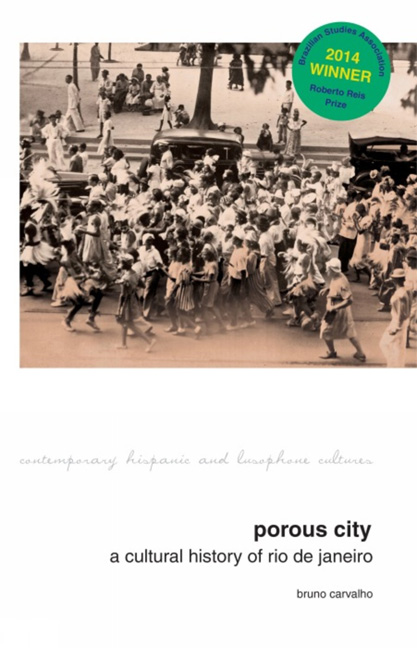Book contents
- Frontmatter
- Contents
- List of Maps
- List of Figures
- A Note on Translation
- Preface
- Introduction: In Search of Things Past: Mapping Rio
- 1 At the Centre of an Imperial Capital: Swamps, Yellow Fever, and Gypsy Parties
- 2 A Master on the Periphery of a Periphery: Popular Music, Streetcars, and the Republic
- 3 Beyond the Belle Époque: On the Border of a ‘Divided City’
- 4 Afro-Jewish Quarter and Modernist Landmark
- 5 Writing the ‘Cradle of Samba’: Race, Radio, and the Price of Progress
- 6 ‘It's (Mostly) All True’: The Death of a Neighbourhood and the Life of Myths
- Conclusion: The Future Revisited: Where Has the Past Gone and Where Will it Go?
- Acknowledgements
- Works Cited
- Index
6 - ‘It's (Mostly) All True’: The Death of a Neighbourhood and the Life of Myths
- Frontmatter
- Contents
- List of Maps
- List of Figures
- A Note on Translation
- Preface
- Introduction: In Search of Things Past: Mapping Rio
- 1 At the Centre of an Imperial Capital: Swamps, Yellow Fever, and Gypsy Parties
- 2 A Master on the Periphery of a Periphery: Popular Music, Streetcars, and the Republic
- 3 Beyond the Belle Époque: On the Border of a ‘Divided City’
- 4 Afro-Jewish Quarter and Modernist Landmark
- 5 Writing the ‘Cradle of Samba’: Race, Radio, and the Price of Progress
- 6 ‘It's (Mostly) All True’: The Death of a Neighbourhood and the Life of Myths
- Conclusion: The Future Revisited: Where Has the Past Gone and Where Will it Go?
- Acknowledgements
- Works Cited
- Index
Summary
What if the plans to build three vast highways crossing Manhattan in New York City in the 1960s had gone through? While we may only speculate about the consequences to New York, in a sense something equivalent happened in Rio de Janeiro two decades earlier. The President Vargas Avenue tore through the heart of a Jewish neighbourhood, the former Little Africa, a Syrian stronghold, and eliminated the Praça Onze, one of the few public spaces enjoyed by residents of nearby favelas, as well as by the many Europeans, naturalized citizens, and native Brazilians who lived in its vicinity.
Rio de Janeiro's loss of the 1940s is a familiar tale of top-down modern urbanism and of the dawn of the automobile age. New York City itself had several neighbourhoods in the Bronx and elsewhere destroyed during the 1950s and 60s for new highways. Around the same time, an interstate was built right through New Orleans's Tremé, and Johannesburg lost one of its few non-segregated areas with the clearing of Sophiatown during Apartheid. Today, in cities like Beijing and New Delhi, countless continue to be uprooted from their neighbourhoods in the name of progress. Despite its geographic centrality and vital role in the cultural life of a national capital, the Cidade Nova met its demise relatively early in what turned out to be a global phenomenon. The President Vargas Avenue, on the one hand, followed those interventions of the late nineteenth and early twentieth centuries inspired by the Baron Haussmann's Parisian boulevards and seen throughout the world's major cities – including, of course, belle époque Rio. On the other hand, it was also in line, as we have suggested, with Nazi fascist influences, signalling a moment of urbanism attuned to totalitarian aesthetics and aims, as well as city planning in function of the car.
While European urban areas rebuilt in accordance to new precepts were often those that had been ravaged during the Second World War (Diefendorf 1989), in American cities great portions of the urban fabric were torn down not by bombs but by bulldozers, in order to make way for ‘modern arteries’ and buildings. It must be recognized that to a great extent the functioning of our contemporary metropolitan centres rely on some of these interventions.
- Type
- Chapter
- Information
- Porous CityA Cultural History of Rio de Janeiro (from the 1810s Onward), pp. 172 - 191Publisher: Liverpool University PressPrint publication year: 2013

